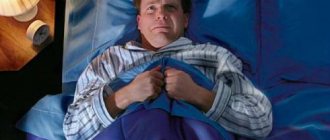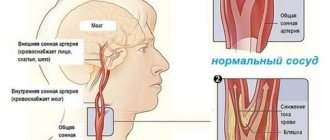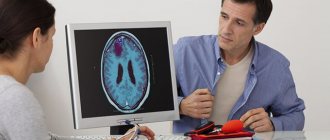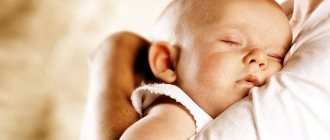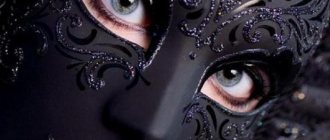Hemifacial spasm is a condition in which there is uncontrollable contraction of the muscles on one side of the face. This condition looks like moving the corner of the mouth or tip of the nose to the side, closing and squinting the eye. Facial muscle cramps can occur due to stress, cold exposure or bright light. The duration of the pulsation is from several seconds to an hour.
As the disease progresses, skin folds and wrinkles appear on the affected half of the face. Facial hemispasm does not go away for a long time; of course, short-term improvements occur in the form of the absence of involuntary spasms.
The main causes of Brissot's disease
As is already known, hemispasm is a disorder accompanied by periodic contractions of the facial muscles. Such cramps do not cause pain. A similar illness can occur as a result of compression of the radicular part of the facial nerve located in the brain stem. However, the exact causes of nervous disorders are still unknown to medicine.
The most popular theory for the occurrence of involuntary muscle pulsation is compression of facial nerves due to dilation of blood vessels that are located at the base of the brain. It is for this reason that people with hypertension and other circulatory disorders are susceptible to hemafacial spasm.
Facial hemispasm usually develops against the background of the following problems:
- long-term use of hormonal drugs and antibiotics;
- multiple sclerosis;
- use of hard drugs;
- injuries with further damage to the subcortical areas of the brain;
- tumors in the brain stem.
By the way, facial hemispasm may have hereditary causes. Damage to the facial nerves in many cases occurs in those whose relatives suffered from a similar illness. This pathology most often has a permanent nature, so any irritating factors can lead to spasms of the facial muscles. For example, eating, sudden changes in temperature, coughing and excessively loud sounds.
It should be remembered that facial hemispasm is a disease caused by nervous disorders. When the regularity of attacks becomes more frequent, it means that the pathology continues to develop, which quite often affects the general well-being of the patient.
Features and clinical picture
Clinical picture of facial hemispasm
The disease progresses rapidly, it all begins with cramps in a small area of muscle tissue. Simply put, the corner of a person’s eye begins to twitch. Gradually, nearby tissues are involved in the pathological process.
That is, muscle contraction is constantly progressing, which leads to the appearance of characteristic signs. Symptoms increase and with a long course of the disease, an attack of facial hemispasm can be provoked by:
- Contact with cold air.
- Harsh or bright light in the eyes.
- Sour or bitter taste of food or medicine.
Seizures occur at varying frequencies; if the disease is not treated, they will intensify and the intervals between seizures will shorten.
According to scientists, those at risk are:
- women during menopause;
- people subject to frequent emotional shocks;
- patients who have undergone long-term antibacterial or hormonal treatment.
A feature of the disease is that it is believed that not only stress or nervous experience can provoke an attack. Cramps often occur when talking or eating and last for several minutes. Predicting their appearance is difficult, almost impossible. After all, any factor can act as the main “provocateur”.
But hemispasm only at first glance seems to be a disease with an unknown cause. In fact, various factors can lead to the development of the disease.
Facial hemispasm: symptoms
The onset of classic hemifacial spasm is accompanied by periodic spasms of the orbicularis oculi muscles. As the disease develops, attacks of pinched nerves begin to become more frequent, and the affected area expands. When Brissot's disease completely affects one side of the face, the eye becomes unable to see. Atypical hemispasm of the facial nerve, on the contrary, begins with contraction of the muscles of the cheek, gradually moving to the eye.
Among the main symptoms of hemical spasm, the following characteristic signs are noted:
- Involuntary cramps that do not go away even during sleep.
- The occurrence of an attack due to stress, panic, overwork and overexcitement.
- On the affected side of the face there are expressively drawn nasolabial folds.
- The muscles of the face are greatly weakened, the eyelids cannot close completely, and when the eye is closed, the eyebrow rises.
In addition, with hemispasm, the face becomes asymmetrical: in the half where the disease provokes muscle contraction, the wing of the nose and the corner of the mouth are raised.
Diagnostic measures
The doctor makes this diagnosis based on the clinical picture of the disease and the patient’s complaints. Facial hemispasm, the photo of which is presented below, usually begins from the lower eyelid. Over time, the pathology spreads to the muscles of the neck, cheek and chin. Initially, the disease has clonic convulsions, which, as the disease develops, become tonic-clonic in nature.
Instrumental examination methods only help to confirm or exclude the presence of a neoplasm in the cranial cavity, where the facial nerve root is located. Magnetic resonance imaging is performed to detect the proximity of the facial nerve and vessel. True, neurovascular conflict is not always detected in people with such pathology.
Diagnostics
Clonic hemifacial spasm can be quite difficult to distinguish from other diseases, for example, from myokmia, tiacs, and also from myoclonus. All these pathologies lead to negative processes occurring in the cerebral cortex or in the trunk of this organ. To accurately identify the disease, neurophysiological testing is recommended. Based on its results, the doctor will be able to tell what exactly the patient is facing
Often, to make an accurate diagnosis, a person needs to undergo examinations that will allow visualization of the problem organ. Magnetic resonance imaging is popular because it can be used to understand what exactly is happening to the human brain, as well as to the blood vessels. It will be important to eliminate compression effects.
With facial hemispasm, a person may be referred for angiography of cerebral vessels. This is necessary in order to find changes that have occurred in them. Only after the examinations have been completed will it be possible to draw an accurate conclusion about the patient’s well-being. In this case, the doctor will have the opportunity to prescribe an exact treatment regimen based on the characteristics of the condition.
Facial hemispasm: treatment
This disease is treated in different ways. The choice of method depends on the factors provoking the attacks, as well as the nature of the manifestation of the nervous disorder. Only a doctor can select the most effective treatment after performing diagnostic tests and identifying potential contraindications to various medications.
Hemispasm of the facial nerve, which is treated in several ways, can be eliminated only if all the doctor’s recommendations are followed. Botulinum toxin is often used today for the symptomatic treatment of hemific spasm. It is recommended to administer it 2-3 times a year. The results of such injections last up to 4 months, so patients have to repeat them regularly.
Psychological therapy also helps relieve a person from involuntary facial muscle spasms, especially when their appearance is provoked by various emotional and stress factors. During their sessions, specialists teach patients self-control techniques so that they can avoid negative manifestations and reduce stress.
Hemispasm is also treated with electrical stimulation. This treatment is aimed at improving blood circulation in the facial muscles, which helps reduce the level of pathological excitability. Moreover, this procedure promotes the production of hormones that have a beneficial effect on the facial muscles.
Differential diagnosis[ | ]
Diseases and syndromes that require a differential diagnosis:
1. Essential blepharospasm 2. Facial myokymia (pseudofasciculations) 3. Tic (psychogenic facial spasm) 4. Focal cortical seizures affecting the facial muscles. 5. Aberrant regeneration of nerve fibers after injury or Bell's palsy (post-paralytic hemispasm) 6. Delayed (tardive) dyskinesia (as a complication due to taking antipsychotics).
This list also includes Meij's syndrome (a combination of blepharospasm and oromandibular dystonia), hemimastic spasm.
Treatment of facial hemispasm with folk remedies
But before moving on to such treatment, it is necessary to understand that traditional medicine will not completely cure the disease, it will only help alleviate the condition. In addition, you should consult with a specialist.
An effective remedy in the fight against involuntary facial spasms is a compress using lemon juice and garlic. To prepare it, you must first peel and chop several cloves of this plant, then pour the resulting pulp with water.
This product is boiled for 5 minutes, then it should be cooled and lemon juice should be added to it, mix everything well and place on cheesecloth. The compress is applied to the affected area on the face until warm, then a new mass is prepared. A similar procedure is repeated until the unpleasant symptoms of the disease disappear.
You can try to treat hemafacial spasm with marshmallow root. A few tablespoons of this component should be poured with boiled water and left to infuse for 8 hours. A cloth is moistened in the resulting product and applied to the face; paper and a woolen scarf are placed on top of it. It is better to apply the compress in the evening before going to bed. The procedure must be carried out for about 7 days.
A compress made from a white onion helps fight this pathology quite well. First of all, you need to pass it through a meat grinder, and distribute the resulting mixture between layers of napkins and apply it to the problem area.
Epidemiology (prevalence) of hemifacial spasm[ | ]
According to the Minnesota Epidemiological Study 1960-1984. The prevalence rate of this disease was 7.4 per 100,000 male population and 14.5 per 100,000 female population. The average annual increase in incidence, age-standardized for the white population of the United States in 1970, is 0.74 per 100,000 men and 0.81 in women. The incidence rate and prevalence rate of the disease were highest in the age group from 40 to 79 years[13]. In Oslo, Norway, the prevalence rate of HFS is 9.8 per 100,000 population [14].
Getting rid of hemispasm in another way
If you experience pain during involuntary contractions of the facial muscles, you should use geranium leaves. They need to be placed on a small piece of linen cloth and pressed against the affected area. The procedure should be carried out at least 3 times a day, constantly replacing the leaves with fresh ones. Signs of hemispasm should decrease after a few hours.

